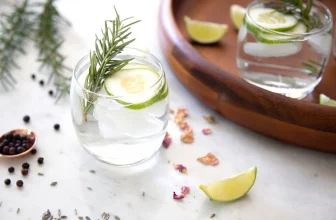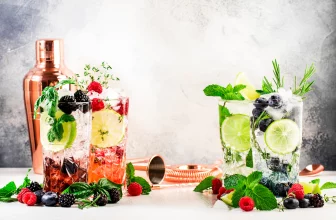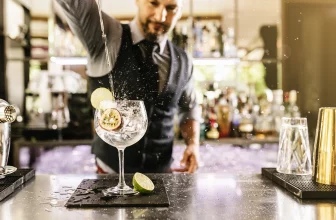What is Rum? Well, rum is delicious. Sweet and versatile, rum is a spirit that can be sipped on its own or made into tropical tiki or old-school classic cocktails.
But although Ernest Hemingway may have romanticized daiquiris as he famously guzzled them in Cuba, the true history of rum is a much darker and stormier affair, tied up with conquest, slavery, and the American Revolution.
Read on to learn all the rum basics — how it’s made, how it’s classified, and how it became the de facto spirit of America — for a while, at least.
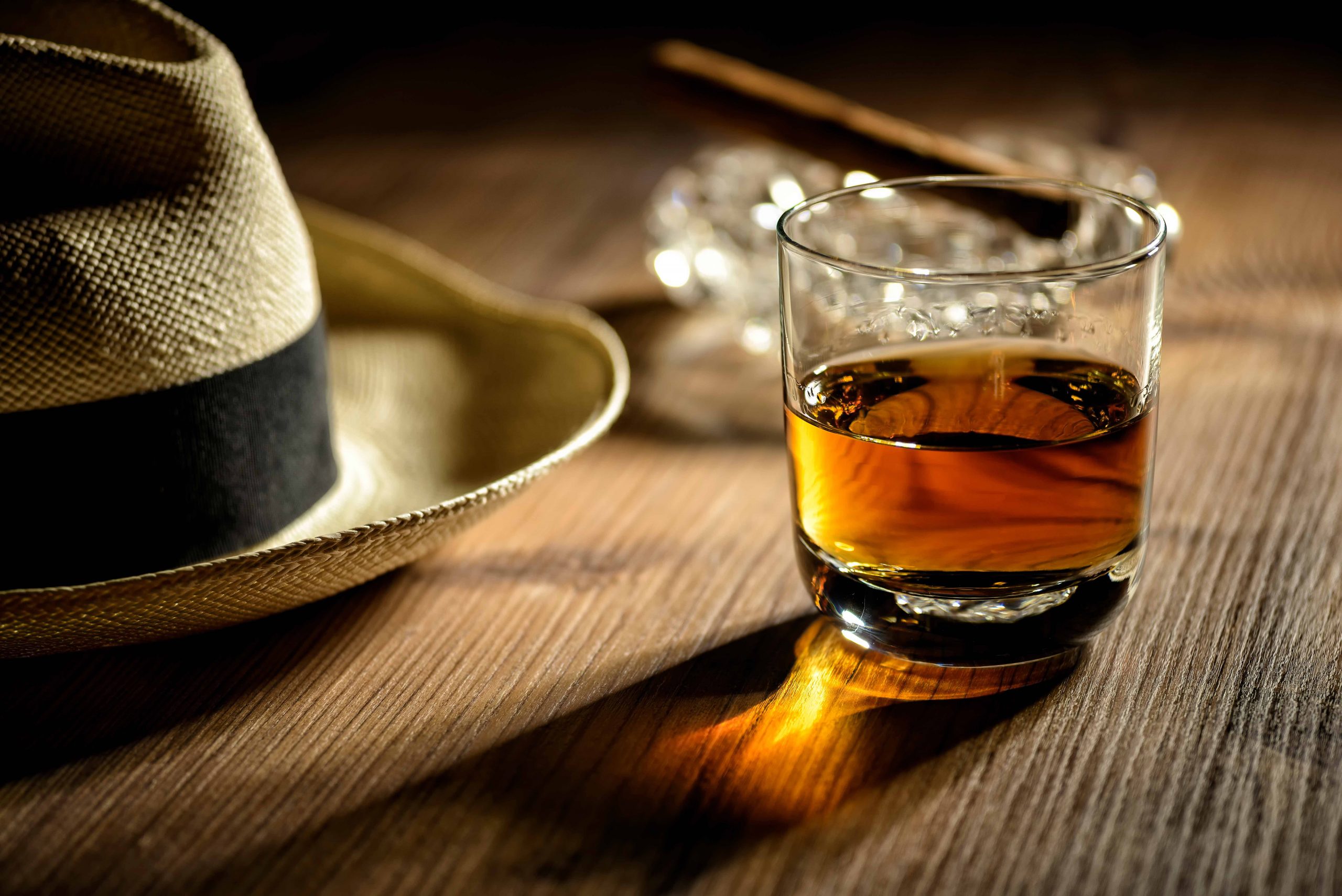
About Rum
Rum is a type of liquor made from sugar. Sugar cane is one of the most popular source of sugar and is found in the Caribbean. While rum originates from India or China it was mass produced and made famous by countries in the Caribbean like Jamaica, Guyana, Haiti, Puerto Rico, Cuba, Puerto Rico, Dominican Republic and others.
Rum is versatile and can be mixed to make cocktails like bourbon, tequila, vodka, gin and other spirits
Rum Parings
Music
Food
Strains
Frequently Asked Questions about Rum
How is Rum made?
Sweet rum comes from the sweetest source — sugar!
Rum can be made by distilling sugarcane juice or, in the more traditional way, by distilling fermented molasses — the dark, sticky byproduct of the sugar-making process, often used for baking or candy-making.
After distillation, rum is aged in stainless steel or oak, depending on the type of rum being produced. Rums are defined by the aging process, which mellows the flavors and adds color.
Aging times can vary widely. Generally, rums aged in a hotter climate, like the Caribbean, will require fewer years than those aged in cooler climates.
What are some Popular Rum Cocktails?
Here are a few of the most popular rum cocktails.
- Rum and Coke
- Dark and Stormy
- Rum Punch
- Mai Tai
- Daiquiri
- Piña Colada
What Are the Different Types of Rum?
Just like tequila, rums are categorized by their different aging methods. Although rum used to have nicknames like Kill-Devil, Nelson’s Blood, and Demon Water, today’s appellations are a lot less scary.Here are the definitions for some of the most common types of rum:LightAlso called white or silver, light rums are aged briefly in stainless steel instead of wood. Without wood to color the rum, it remains clear. These are usually the most affordable rums with the most subtle flavor. They’re commonly used in cocktails like daiquiris and mojitos.GoldGold rums are medium-bodied, often aged in oak. The color may be enhanced by additives, like caramel. These rums tend to be smooth and used in cocktails from piña coladas to mai tais.AgedBecause of their golden or amber color, aged rums are often confused with gold rums. But unlike gold rums, aged rums include no additives. They get their color strictly from the casks they were aged in.These rums can be used in cocktails but are probably best for sipping.DarkDark rums are aged in charred oak casks. Rich and sweet, they can be sipped or added to cocktails like hurricanes and Dark & Stormys.FlavoredFlavored rums, like Malibu Coconut Rum or Captain Morgan Spiced Rum, are often affordable rums intended to be added to cocktails.CachaçaCachaça (pronounced ka-sha-sa) is a clear Brazilian rum distilled from pure sugarcane juice. Made only in Brazil, this spicy/sweet rum is most famously used in caipirinhas with muddled sugar and lots of lime.
Where Rum Originates
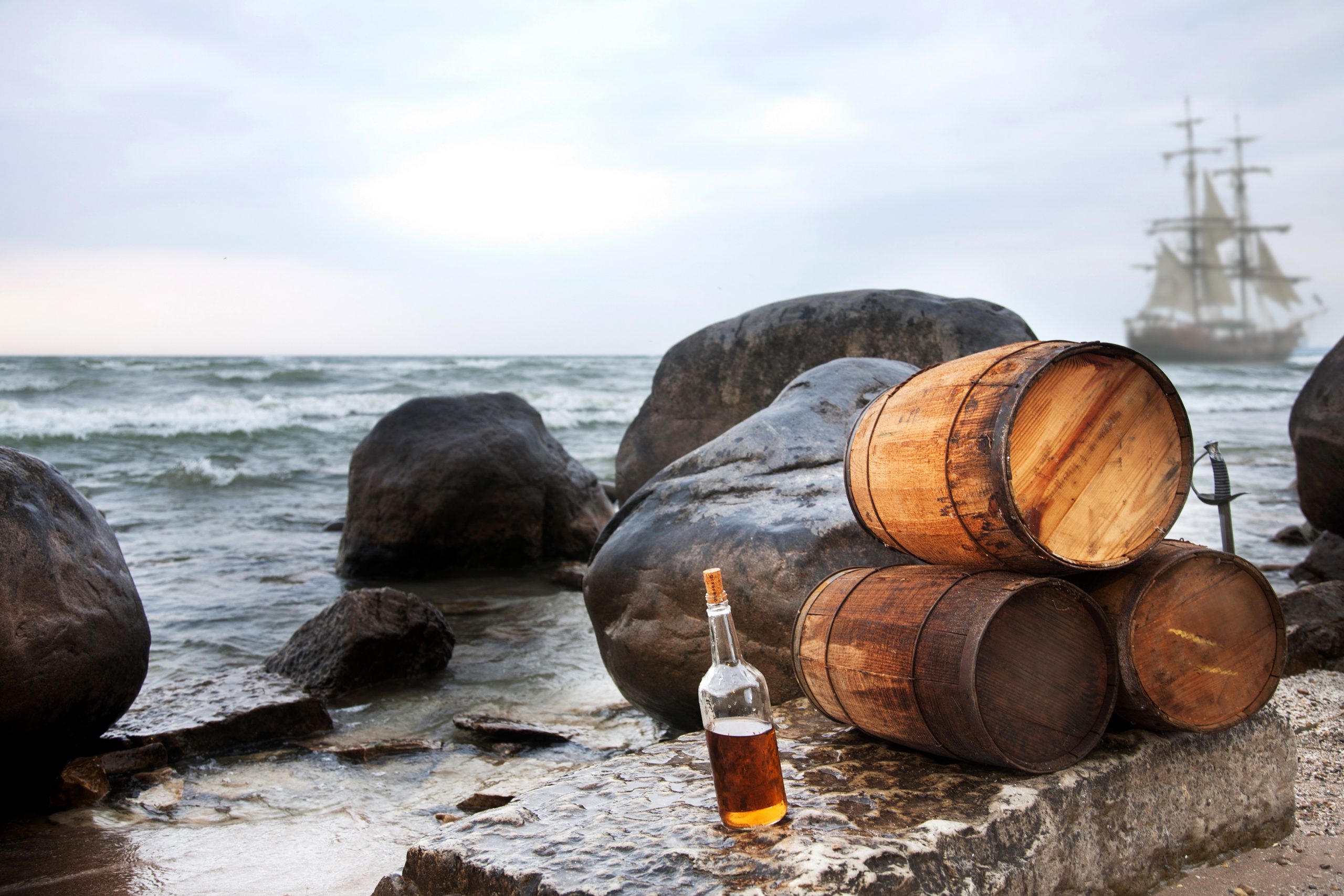
History of Rum
Fermented drinks made from sugarcane date back thousands of years to India and China, where the plant originated.
But the history of rum as we know it is tied to the history of America — and slavery. When European colonizers “discovered” the Caribbean islands, they found a perfect climate for sugarcane production. But all that agriculture required labor. So enslaved people were shipped to the islands to work on the sugarcane plantations.
A byproduct of the sugar-making process was fermented molasses. It’s believed that some enslaved people tried distilling the molasses — and rum was born.
The drink caught on quickly, and distilleries were established throughout the colonies, using sugarcane juice and molasses from the Caribbean plantations. American colonists were smitten, drinking gallons of the sweet spirit every year. Even George Washington — when he wasn’t distilling his own rye — was lubing up the voters with rum and rum punch during his run for the Virginia House of Burgesses in 1758.
Rum even played a part in the American Revolution. In 1764, King George III passed the Sugar Act, banning the colonies from importing sugar and molasses from the French- and Dutch-controlled Caribbean islands. Later compounded by British taxes on stamps and tea, frustrations reached a boiling point and … we all know what happened next.
After the Revolution, the rum boom slowed down in the states. The Caribbean islands where sugar was produced were still under British rule, making sugar imports much more expensive to get.
Plus — we’d just kicked their butts in a war.
Distillers turned to more easily accessible grains, leading to a spike in whiskey and rye production that would last through the 19th century.
Although rum retained some niche popularity in parts of the south, a lack of quality rum distilleries in the second half of the 1900s prevented it from making a comeback.
But things are looking up for rum! It’s now the third highest-selling spirit in the US, behind vodka and whiskey. And high-end aged rums like Don Papa 10-Year Rum and Rhum J.M. V.S.O.P. are bringing the category out of cocktails and into sipping territory.
Rum Summary
Although the history of rum reminds us of a troubling past, today’s rum distilleries are looking to the future. Ranging from small-batch family operations to worldwide mega producers, there are more varieties of rum to try than ever before.
Whether you prefer to sip your Demon Water on ice or down daiquiris like Hemingway, it’s an exciting time for the spirit.
Yo ho!


